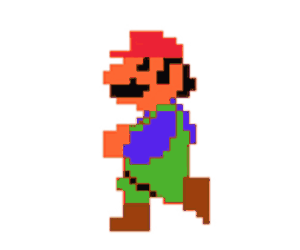HTML5 Canvas
Object Animation in Canvas
In this chapter, we will learn the basics of animation in the canvas. Animation is an essential component for creating games, as it allows for object movement and a dynamic visual experience. We will use the requestAnimationFrame method to create smooth and optimized animations.

Concept of requestAnimationFrame
To animate in canvas, the requestAnimationFrame method is used, allowing a function to be executed repeatedly at specific intervals, ideal for maintaining high performance in animations. This method synchronizes animations with the screen's refresh rate, providing a smoother visual experience.
Creating an Animation Loop
Let's see how to create a basic animation loop that updates the position of a square on the canvas.
javascript
Controlling Animation Speed
We can adjust the animation speed by modifying the increment of the position variable, in this case x. For example, if we increase x at higher values, the object will move faster.
javascript
Creating Two-Dimensional Animations
To create movements in two directions, we simply add a second variable for the Y-axis. In this example, we will make the square move diagonally.
javascript
Exercise: Create a Complex Animation
Try creating an animation where a circle moves in a circular path. For this, you can use trigonometric functions to calculate the x and y positions based on an incrementing angle.
javascript
Conclusion
In this chapter, we explored how to animate objects on the canvas, from linear movements to more complex two-dimensional paths. Animation is an essential technique for games, allowing for an engaging and dynamic visual experience.
Support Chuck’s Academy!
Enjoying this course? I put a lot of effort into making programming education free and accessible. If you found this helpful, consider buying me a coffee to support future lessons. Every contribution helps keep this academy running! ☕🚀

Chat with Chuck

- Introducción a HTML Canvas
- Handling Colors, Strokes, and Fills
- Adding Text to the Canvas
- Capturing User Input
- Handling Images and Sprites in Canvas
- Object Animation in Canvas
- Detección de Colisiones y Lógica de Juego
- Building Game Logic
- Adding Sound Effects and Music
- Enhancing User Interactivity and Visual Experience
- Adding a HUD and Scoreboard
- Optimización del Rendimiento y Compatibilidad del Juego
- Completion and Game Testing
- Game Publishing
- Complete Project – Building the Full Game
- Next Steps













